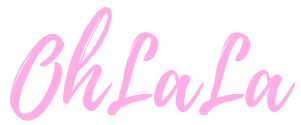Let’s look back at the history of eyelashes through this article. You may shock yourself at some of the discoveries and evolution. Well then, read further!
The history of fake eyelashes began in Ancient Egypt and has gone through so much since 3,500 B.C. From using crocodile dung to make the first eye makeup to what it is today made of various materials, it’s very surprising what the fake eyelash industry has gone through over time.
Your favorite eyelashes have gone such a long way throughout history. Have you imagined how far it has gone? Considered to be mainstream cosmetic products, fabulous eyelashes are such a hit these days. Anyway, how did people come up with the idea of gluing a synthetic lash to their natural lashes in the first place? Fake eyelashes, it turns out, have a rich history that dates back to ancient Egypt.
Ancient Egypt: The First-Ever Eye Makeup (3,500 B.C.)
In the long history of mascara, the Egyptians played a significant role. Egyptians utilized crocodile dung, water, kohl, and honey to manufacture the first eye makeup, which dates back to 3400 – 30 B.C.

To make their lashes appear longer, Egyptians used kohl to line their eyes. They say that the eyes are the windows to the soul, so they hid them to keep negative energy and evil spirits at bay. Egyptian males also wore mascara to help them shield their eyes from the harsh Egyptian desert sun.
Ancient Rome (753 B.C. to 476 A.D.)
The Romans demanded brilliant lashes a few years later. The Romans used eyelash augmentation procedures after ancient philosophers Elder and Pliny claimed that short eyelashes were a symptom of aging. Enhancing eyelashes was a feminine trait in the Roman Empire. To make preparations for their appearance easier, women had help from their servants. As a reflection of the splendor brought by the East, Roman women’s lashes should be thick, long, and curly.
To darken the eyelashes, the Romans employed kohl and added antimony or saffron. Burnt cork was also used to darken and thicken their lashes. Small ivory sticks also served as application tools. However, with the arrival of Christendom, everything changed. Christian women stayed away from cosmetics, believing that a natural appearance was more pleasing to God. Therefore, they also thought that long eyelashes were symbols of virginity and morality.
Medieval Times (1066-1485)
As time passed, eyelash extensions fell in and out of style. People in this time did not want to associate themselves with the artificial eyelash craze that soon swept the nation. When you had too much hair during this time, people perceived you as erotic. There was also an obsession with maintaining face symmetry. They felt that a high forehead giveTolanced look. To show off more of their foreheads, women would pluck out their lashes and eyebrows.
Because eyelashes perform a crucial purpose in keeping dust and debris out of the eyes, the procedures they utilized were risky. The good thing was, this fashion craze faded right away.
Elizabethan Era (1533-1603)
It was Virgin Queen Elizabeth I who popularized red hair that made the entire kingdom follow. Women of the time dyed their hair a bright red color to match Queen Elizabeth I’s remarkable beauty. Then, they went a step farther and colored their eyelashes and pubic hair crimson as well.
What the general public of England didn’t know was that Elizabeth wore wigs for most of her life. Of course, she also happened to pick red. She was so determined to use the color that she even ordered to dye her horse’s tail red.
Victorian time (1837- 1901)
Eugene Rimmel, Queen Victoria’s perfumer, invented the first mascara in the mid-nineteenth century. Vaseline jelly and coal dust were in his eyelash mixture. The invention immediately gained popularity, becoming a fashion standard in the 1800s. Such an invention also influenced the history of eyelash extensions.
Victorian women were also meticulous in their appearance, spending hours grooming and dressing. They tried various cosmetic formulas like eyeliners and mascaras. In fact, they made these in the privacy of their own dressing rooms. Then, through the help of their servants, they mixed ashes and baseline to make their own mascara.
Moreover, some of them also inserted lashes into their eyelids using needles in 1899. That was a common technique, especially in major cities such as Paris. Those who were less brave tried gluing human hair to their eyelids instead of threading it. Unfortunately, the approach wasn’t very successful.
Early 20th Century: The First Faux Eyelashes
Anna Taylor, a Canadian woman, was the first to artificial patent lashes in 1911. In 1916, Hollywood director David W. Griffith wanted his actress to have fluttering lashes. Due to that, he directed his film’s wig-maker to use spirit gum to attach lashes made of real hair onto the actress’ actual eyelids. Unfortunately, this procedure was not very effective, and it wasn’t until the 1930s that synthetic eyelashes became quite fashionable.
While seeing his sister, Mabel Williams, putting ointment to her eyes to darken her eyelashes in 1917, a man named Tom Lyle became inspired. He began collaborating with a drug salesman, and the two of them improved the formula. The final product was “Lash-Brow-Ine,” a sheen-enhancing compound containing oils and petroleum jelly. Unfortunately, they had to change the name to “Maybelline” in 1920.
The Arrival of Commercial Faux Eyelashes (1920 – 1930)
Many ladies received their makeup inspiration from movies in the early days of makeup. Films were still silent in the 1920s with no spoken parts. Bebe Daniels, for example, had to emote with her facial expressions. What helped in highlighting their eyes were thick and long lashes.
Designed by William Mcdonell in 1931, Kurlash was the first patented device to curl fake lashes in a few seconds. The simplicity of using Kurlash paved the way for the eyelash industry. This early type is identical to the curves and curls of false lashes that we use today.
Hollywood Glamor (1940 – 1950)
Until the 1940s, every major publication discouraged the use of fake eyelashes. They claimed that they were torturous devices for women. WWII also used up a lot of the industrialized world’s resources, leaving a few for cosmetic production. They perceived false lashes as unnecessary and wasteful.
The mega-trend of long, full, beautiful eyelashes began in the golden age of Hollywood in the 1950s. Actresses like Rita Hayworth wore artificial eyelashes in photoshoots to have more appeal. In the 1950s, the doe eye was all the rage. Lashes were a crucial component of appearance.
It was in the 1940s that the first waterproof mascara came about. During this time, lashes were no longer made of human hair or fabric. Instead, sturdy thin plastics became the common material in making them.
Bolder Lashes (1960 – 1970)
In the 1960s, the popularity of false eyelashes skyrocketed. As a result, the 1960s makeup look was more daring, youthful, and inventive. The model Twiggy became the epicenter of this movement. Her defining look comprised long lashes that enhanced her already huge eyes. To have the thickest-looking lashes, women stacked two or three sets of eyelashes on top of each other.
Makeup companies immediately took on the trend. They began producing fake eyelashes in different sizes and colors.
The Start of Eyelash Extensions (1980 – 2000)
Developed in Japan and South Korea in the 1980s, semi-permanent lash extensions were a hit. This was after several consumers sought more sustainable lash options. To apply, you have to clip off a part of the strip lashes and apply it on natural lashes using industrial-grade glue.
Max Factor introduced No Color Mascara in 1988, which made eyelashes look more lustrous without coloring them. Fake eyelashes were not popular in the 1980s, but certain ladies, such as Cher, still wear them. Colored mascara was also quite fashionable in the early 1990s. Many women and teenage girls used it to paint rainbow stripes in their hair. However, fake eyelashes have resurfaced in popularity.
What it is Until Today (2000 – present)
Because you have to put lash extensions one by one, they can give you a more natural look. More so, because they are semi-permanent, you can refill them in two weeks. This way, you can wake up with polished eyes every day.
Jennifer Lopez, Lindsay Lohan, Paris Hilton were among the celebrities who expressed their love for lash extensions. Katy Perry and Kim Kardashian, for example, have recently flaunted their love of eyelash extensions. These superstars have helped to keep the trend alive in popular culture, paving the door for more expensive and quirky outfits.
Aesthetic Korea Co., Ltd. began manufacturing semi-permanent eyelashes in 2008, and they became popular in Korea. Since then, other businesses have sprouted with a huge impact on neighboring nations. But, many manufacturers relocated to China and Vietnam because of the annual labor price increase in South Korea.
Finally, Katy Stoka of One Two Cosmetics in Miami introduced the false magnetic lash in 2014 as an alternative to glue-based false lashes. Magnetic eyelashes are also becoming popular. Because of such fame, several companies like To Glam and Ardell produce cheaper versions.
Conclusion
True enough, the evolution of faux eyelashes has gone so far. However, its development has also paved the way to more creative and sophisticated options as the modern beauty trend aims for natural looks. Needless to say, faux eyelashes, in general, are women’s greatest beauty armor.

